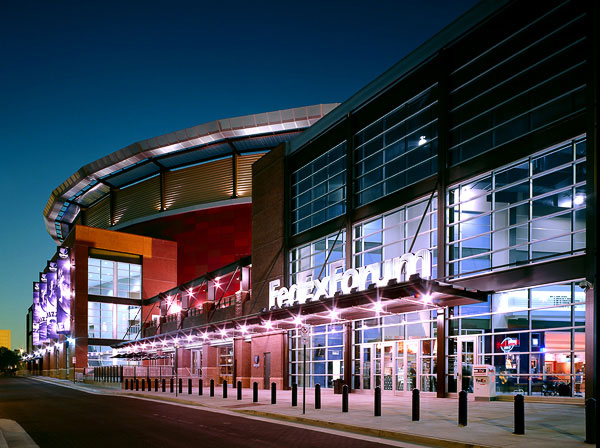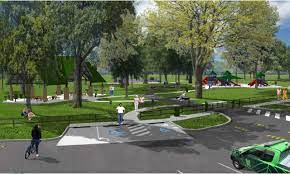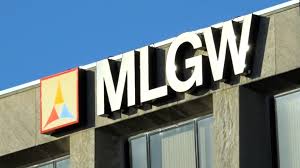In June, 2006, we posted a commentary about the negotiations involving FedEx Forum as the controversy about its construction and financing flared up again. It’s hard now, so many years later, as the city basks in the victories of the Memphis Grizzlies and the successes of the Forum, to remember the depth of the controversy back then over almost anything connected with the project. And yet, as the Grizzlies non-compete agreement becomes an issue for some in the Fairgrounds TDZ, we thought some historical context might be helpful.
It’s worth noting that when city and county negotiators entered into the non-compete agreement with the Grizzlies, it was precedent-setting because the agreement required the Grizzlies to pay the operating deficits for the arena (Nashville was paying $5 million a year for the operating deficit for its NHL team) and it required the Grizzlies to sign a long-term commitment to remain in Memphis (which no one predicted they would ever agree to).
Here’s what we wrote in June, 2006, about the negotiations that produced the so-called HOOPS agreement (which included the non-compete language):
The current controversy about the FedEx Forum garage is quickly becoming about more than why plans were changed and how $6.3 million in federal funds were lost.
There are resurrected questions about the contract between Memphis and Shelby County Governments and the Grizzlies. There are renewed shots taken at owner Michael Heisley by fans made mad by some of the team’s mistakes in the care and feeding of its customers. There is the expected political distancing by elected officials who were there and voted for the contract for the new arena.
All of this smoke runs the risk of obscuring any light that can be shed on the spark that ignited the fire in the first place – $6.3 million that was not spent in compliance with the guidelines for the federal program where the money originated before being channeled through Tennessee Department of Transportation.
That said, we’ll wade in any way. When our friends at the Memphis Flyer editorialize that the contract with the NBA team was “one-sided” and a “Faustian bargain,” it just feels like mythology is replacing reality when it comes to the history of the project.
Looking Back
So let’s rewind the tape.
Back in 2001, some of Memphis’ most directly engaged, civic-minded business leaders learned that there was a chance to land a professional basketball team in Memphis, a fulfillment of this city’s long-held dream and the antidote to the beating that our civic ego had taken in pursuit of the National Football League.
They heard that the Vancouver Grizzlies was looking to move. They contacted Michael Heisley – not the other way around – to ask if Memphis could be considered. Like it is in the world of professional sports franchises, there’s no warm, fuzzy feelings that lead a team to move to a new city. It’s nothing but clear-eyed financial benefit, frequently expressed in the public commitment to provide an NBA-quality arena that can be a revenue center to help make the business model of the NBA work.
There is nothing unique about this, because Memphis’ experience is consistent with what happens in almost every city. (It’s worth noting that the team and the so-called local NBA pursuit team weren’t even demanding a new arena, because they were prepared to have The Pyramid upgraded to NBA standards. That’s when it was suggested by the county mayor, not Mr. Heisley, that for slightly more money, a new arena could be built specifically to NBA specifications.)
It’s worth remembering another often forgotten fact these days: Memphis was competing with another city for the Grizzlies, and so Memphis and Shelby County weren’t just negotiating against the Grizzlies, but negotiating against a rival city.
Negotiations
From the beginning, negotiations between city, county and the Grizzlies were testy and emotional. At their first meeting, the Grizzlies laid out their requirements to move to Memphis. Local government didn’t respond to their list and instead presented their own list of demands. The team’s negotiators left the room to talk, and quickly walked out of the building and flew out of Memphis.
No one in the halls of government panicked and got on the phone to put things back together. City and county negotiators had made a list of “deal breakers” that were nonnegotiable. Failure to agree on any of them would collapse the talks from the public side. So, when the Grizzlies walked out of the room, Memphis and Shelby County Governments concluded that it saved them a lot of time, because it didn’t look like the team would agree to the public conditions any way.
Through the mediation of a third party, the teams were reassembled to see if there was a way to restart the negotiations. Taking place in the offices of Storage USA with the shuttle diplomacy of its CEO Dean Jernigan, city and county negotiators were in one room and the Grizzlies representatives were in another. Again, city and county negotiators listed their deal breakers, and over the next month, one by one, they were accepted, but not without the charges and countercharges that are part of any negotiation. Eventually, the big issues that had been deferred while the others were addressed were all that were left: the Grizzlies paying the operating losses for the new arena and the team making a long-term commitment to stay in the arena and in Memphis.
Local government had been told by pro sports consultants and colleagues in other governments that no city of Memphis’ size would ever win these two key concessions, and frequently, it looked as if they would kill any chances for a contract.
Non-compete
It was in the context of the Grizzlies’ accepting operating losses – estimated at upwards of $5 million a year – that the non-compete clause was put on the table. No one with any business sense – much less an NBA team owner – would take on the obligation of paying the operating costs and not look to protect their downside in the form of competition from other buildings that could easily undercut rental rates for the newer, more expensive arena.
It was a lesson that city and county had learned painfully when The Pyramid opened without closing the Coliseum. The old arena – already paid for and with no official concessionaire or parking company – was adept at underbidding the newer building, accomplishing nothing so much as driving up the operating subsidy of The Pyramid year after year and putting more money in the pockets of promoters (although the Coliseum still did not make a profit).
It was thought in 2001, and it’s still the case today, that it’s in the long-term best interest of taxpayers for FedExForum to succeed, and in that vein, the non-compete clause was agreed to in return for the Grizzlies taking on the operating losses. In other words, the option was for taxpayers to pay more than $5 million a year for the operating deficit of the building and it could have even been higher. After all, sponsorships and advertising agreements are skills that government doesn’t possess and or ill-equipped to perform or oversee.
So, the minimum cost of eliminating the non-compete clause would have been more than $5 million for the Forum, about $2 million for the operating deficit at The Pyramid and the $1 million deficit at the Coliseum. In other words, local government could have taken on a total of $8 million in operating deficits and all just so promoters could make more money from their events.
Debating The Merits
While it’s never out of bounds for people to question the public benefits of the Forum, or whether this is the best use of $250 million or whether research proves that professional sports deliver as economic engines, the malignant notion that city and county governments simply agreed to whatever the Grizzlies demanded is just wrong.
That said, lost in the fog of opinions is this fact: the preponderance of the financing on the arena come from user-related fees like the state sales tax rebate from NBA events and the arena’s seat use fee, and from hotel-motel taxes that only could have been spent on an arena or convention center.
In other words, it’s a fair discussion to debate whether the political and civic leadership should have spent their energies pursuing the team and building a new arena, but keep in mind that the vast majority of the revenues paying for FedExForum could not be spent on anything else.
Looking back, a number of letter writers seem to believe this project was rammed through the public process with little public support for it. It’s worth remembering that the publicly-funded poll demanded by arena opponent Commissioner Walter Bailey, to his dismay, showed that a majority of people in this county supported the arena financing plan.
The Power Of Rhetoric
As we say, there is room to debate the facts, and there is the obligation to get the answers about how the Forum garage plans were changed without federal approval and in violation of the federal regulations.
But hopefully, we can keep in mind that if the Mud Island experience taught us anything, it is that we have the power to make FedExForum a failure. It happened to Mud Island on the day long ago when the Memphis City Council, putting distance from the project they had approved, called it a failure. From that day on, it was.
Let’s investigate the garage controversy until full accountability is reached. Let’s debate the public value of professional sports. Let’s discuss whether local government has its priorities wrong.
Let’s just try to remember that we won. We got the professional sports team that we had sought for more than 20 years, we got a long-term commitment from it to this city, we got it to pay the considerable operating losses of the new arena, and we did it with no larger percentage of property taxes in the Forum project than city and county governments put into AutoZone Park.






I’m both a fan and advocate for the Grizzlies so let me
get that out first so that there can be no misunderstanding on that point but, a strong case can be made that all of the business that’s flowing to the Landers Center in Mississippi could have remainded in Tennessee, even more important Memphis by having a smaller venue that doesn’t compete against the Grizzlies but, augments it!
Futher more if local businessman were allowed to think beyond a cost of repairs including ADA compliance I truly believe a locally owned entertainment entity along with private sector partnerships would and could have tremendous impact on the initiatives currently beind discussed by local officials. These are my thoughts and hopefully the Coliseum will continue to stand.
good read and good reminders. but why are so many bent on saving the coliseum?! i just don’t get it. move on, folks. there’s nothing worth saving there.
The Mid South Coliseum has long been an embarrassment to the city and region. It’s old, ugly, small and has been run down for longer than I can remember. Yes, time to let it go!
The same pretty much applies to the Liberty Bowl stadium, but since we have absolutely zero chances of ever landing an NFL football team here, it serves a purpose for UofM and high school sports games.
FedEx Forum is fine, but it is beginning to show its age too and is not as well utilized as it should be. As long as the Grizzlies organization pays the freight there, it’s ok. They need to make a much stronger case for attracting other sports and entertainment at FedEx Forum. It sits dark way too many nights of the year.
Fix liberty bowl (press box, concessions,bathrooms, no vehicles around its base, only pedestrians and landscaping, etc.) and coliseum (general repair, expand concessions, bathrooms, pedestrian friendly surround, etc.). Remove 11,000 basketball seats in favor of rollouts to fit events.
Renegotiate for Grizzlies to manage both facilities with TDZ money used to subsidize operation. High school sports to have access in addition to concerts that want a smaller venue. Liberty Bowl, University of Memphis football and Southern Heritage to pay more rent to help TDZ cash flow.
Design/build fairgrounds to house multiple outdoor sports facilities, housing for athletes , and retail only if it does not require a shift of spending from other parts of Memphis (not likely). Sports facilities to be used by a merchandise mart to demonstrate equipment. A great lawn to be used for sports on grass, particularly golf.
Connect fairgrounds to green line and downtown trolley (to benefit downtown hotels), with trolley also being placed along unused portion of green line out to Fayette County. The latter would channel sprawl to high density corridor.